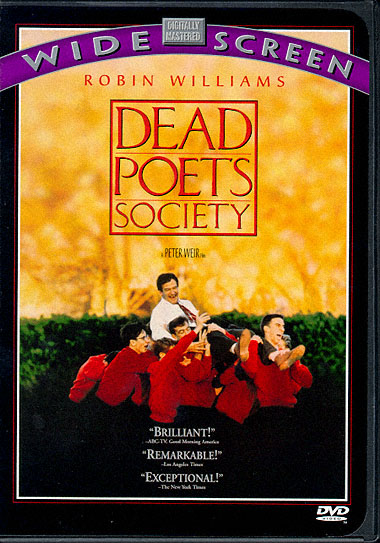
Week 3 - Film Technique


The scene I chose to select is from the film, Dead Poets Society, starring Robin Williams. The scene takes place toward the end of the film when John Keating (Williams) has found out that he is being fired from the boys’ academy. Keating walks back into his classroom to gather his things where his students are being taught by a new man. As he begins to gather his personal items, one boy climbs up to the top of his desk and claims, “O Captain, my Captain,” as Keating once had done previously in the movie. As the film continues, one after another, each boy climbs to the top of his desk to proclaim his love and loyalty to his former teacher.
Throughout this brief four minute scene, there are many film techniques that are used. When Williams first enters the classroom everything is silent to portray the awkward and nervous state of each person in the room. The camera shows the entire classroom as each boy has a hard time even looking at Williams because of either shame or great sadness. When one boy finally begins to read what the new professor wants, Williams reenters the classroom from his office and the door creaks. Everyone stops to acknowledge his presence. This is symbolic of the way in which John Keating was able to capture each boy’s heart and mind for literature. He was a teacher that was different and caused the boys to think. As Williams begins to exit the room, a slow sad music begins to play. As he is leaving, the music begins to turn hopeful and become more powerful. This is the moment when one boy cries out, “they made us sign it! Please, you have to believe me!” Keating responds that he does believe the students and then is yelled at by the new professor to leave. At this moment, Todd (the boy that cried out) climbs to the top of his desk and the camera closes in on his face. He claims, “O Captain, my Captain!” The music begins to get louder and louder at this point as boy after boys climbs to the top of his desk in support of their teacher. As the boys are on top of the desk, the camera is shooting up which portrays that each boy has been filled with power because of Keating. The movie ends with the camera focusing on Todd, the boy who perhaps has been changed the most by Keating’s support and teaching.
The purpose for the use of these techniques in terms of the movie’s larger purpose is to display a theme of loyalty and influence. By the movie ending with the boys on the top of their desks shows that the boys are now able to stand alone and support the things they truly believe it. They do not need someone to tell them how to live. Keating has so changed the lives of these boys that in return, they are able to support him in the same way he did for them.
One technique that I believe is incredibly necessary in the teaching of film/editing in my classroom is the use of sound and music. When you find the perfect sound or music to fit the emotion you want the audience to feel, the students are able to better convey this emotion to the audience. For example, when the sad music began to play in the previous scene described, the audience understood that the boys were saying goodbye to their teacher and friend. Also, the audience felt that this was not the right thing to be taking place. However, when the music began to get louder and louder and more powerful, the audience quickly changed emotions to a sense of empowerment and extreme loyalty toward Keating. In my classroom, I want my students to do a lot of experimenting in order to find the best options for sound and music to connect with film editing.


0 Comments:
Post a Comment
<< Home